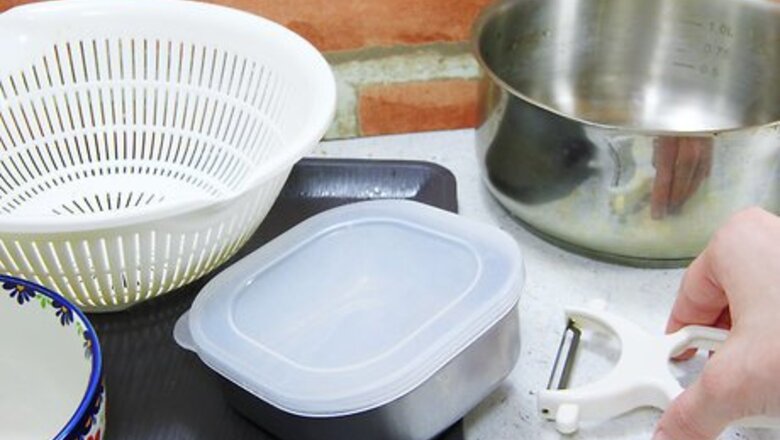
views
Making Crystallized Ginger
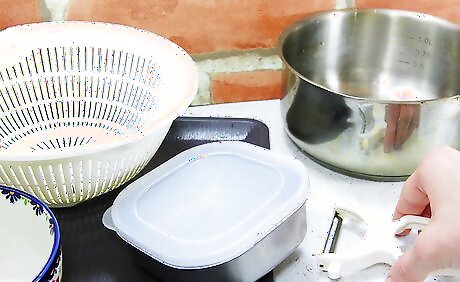
Gather your supplies. Aside from your few simple ingredients, you'll also need a couple basic kitchen tools and supplies to make your candied ginger. To make this tasty treat, you will need: Spoon or vegetable peeler Mandolin Large saucepan Strainer Candy thermometer Wire cooling rack, greased Baking sheet Large bowl Airtight container for storage
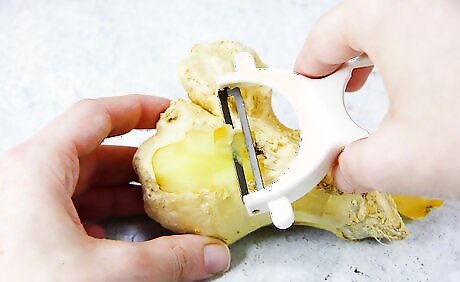
Peel the ginger. You need to remove the skin from the ginger before crystallizing it, and one of the easiest ways to do this is with a spoon. Place the side of the spoon against the ginger root, and gently scrape away the skin. You can use a knife or vegetable peeler for this job instead. Vegetable peelers can be awkward to maneuver around all the knobs and bumps on ginger, and knives often take off too much flesh.
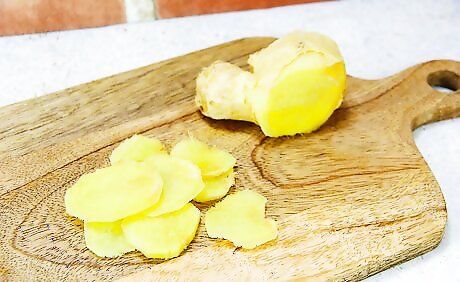
Slice the ginger. Set your mandolin to one-eighth inch (3 mm). Place the ginger on the board and use the pusher to run the ginger over the blade. Collect the ginger slices and place them into a large saucepan. Use a sharp knife to slice the ginger into thin rounds if you don’t have a mandolin. You can also cut the ginger into small cubes if you prefer.
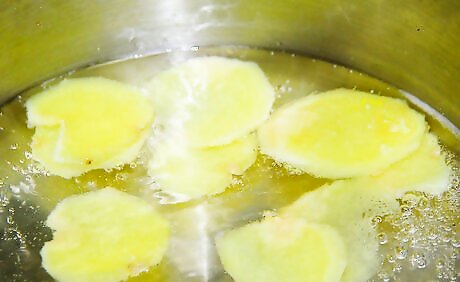
Boil the ginger. Add the water to the saucepan with the ginger slices. Put the lid on, and bring the water to a boil over medium-high heat. When the water boils, reduce the temperature to medium and simmer for 30 minutes. The ginger is ready when it’s tender to the touch and can easily be pierced with a fork. When the ginger is cooked, remove the pan from the heat.
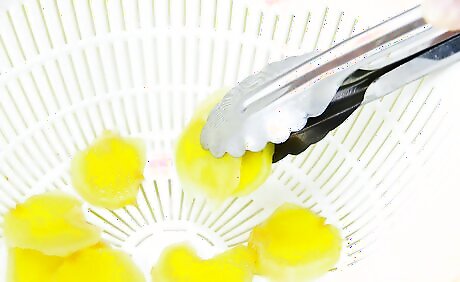
Drain. Remove about 1 cup (237 ml) of water from the saucepan and set it aside. Pour the ginger into a strainer to drain out the rest of the water. Return the ginger to the pot, along with the cup of water you reserved.
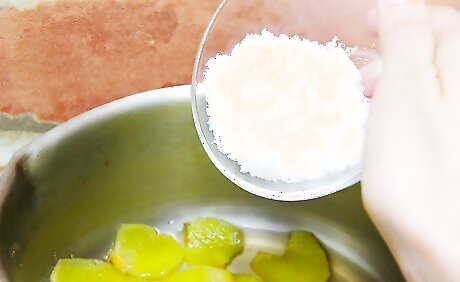
Boil the ginger with the sugar. Add the sugar to the pot with the ginger and water. Bring the water to a boil over medium-high heat, stirring regularly to prevent burning. When the mixture boils, reduce the heat to medium. Continue cooking, uncovered, for about 30 minutes, until the syrup reaches 225 F (107 C). When the syrup reaches the right temperature, remove the pan from the heat immediately. You can substitute honey in place of the sugar to make this recipe.
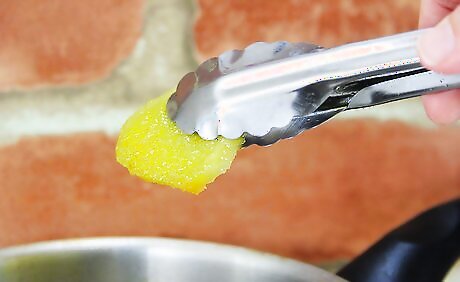
Cool and separate the pieces. Place the greased cooling rack on top of a baking sheet. Spread the ginger pieces out over the cooling rack, letting the extra syrup fall down onto the baking sheet. With a fork, gently separate the ginger pieces so they can dry and cool. Set the ginger aside to cool for one to two hours. You want the ginger pieces sticky enough that sugar will adhere to them, but not so wet that the coating will slide off.
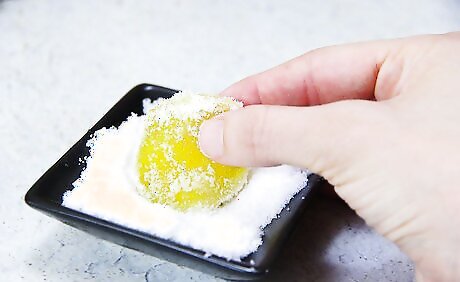
Coat with extra sugar and cool completely. When the ginger is cool enough to handle, transfer the slices to a large bowl. Sprinkle in enough sugar to coat the ginger pieces in a thin layer of sugar. Toss or stir to distribute the sugar evenly and coat the slices. Transfer the ginger back to the cooling rack. Let the slices sit overnight to cool completely.
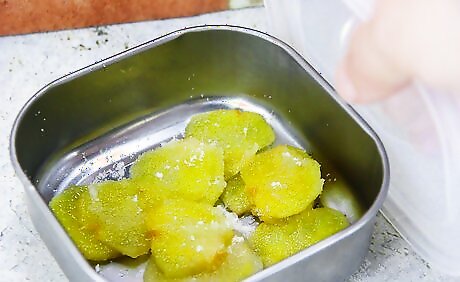
Enjoy the ginger and store any leftovers. Once cool, you can enjoy your crystallized ginger immediately. If there is any ginger leftover, transfer it to an airtight container. The ginger will keep at room temperature for two to four weeks.
Using Crystallized Ginger By-Products
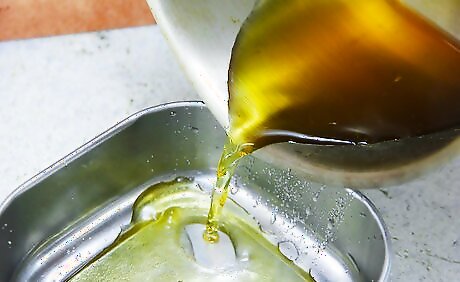
Collect the ginger syrup and sugar. When you place the ginger on the cooling rack to dry, the baking sheet below will catch any excess syrup that drips off. Similarly, when you toss the ginger in sugar, any excess sugar will collect at the bottom of the bowl. Both ginger syrup and sugar can be used in drinks, baking, and other recipes. Collect the syrup when the ginger cools and no more excess is dripping off. Remove the baking tray from under the cooling rack and transfer the syrup to an airtight container. After you transfer the sugared ginger slices back to the cooling rack, transfer any leftover sugar from the bottom of the bowl to an airtight container.
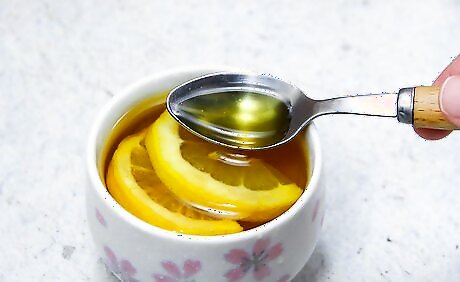
Use ginger syrup as a spicy substitute for white sugar. Ginger sugar can be substituted for regular sugar in any recipe you like. Because the ginger sugar has been in contact with real ginger, it will have a spicy tang to it that will flavor other products. Ginger sugar can be used in hot drinks like tea and cold drinks like lemonade. You can also use ginger sugar to coat the rim of glasses when you make cocktails. Ginger sugar makes a great addition to baked goods as well. Simply sprinkle the ginger sugar on top of cookies or muffins in place of regular sugar.
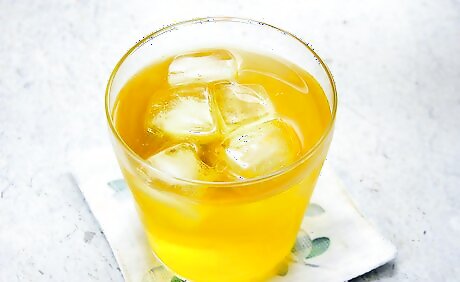
Make a quick ginger ale. While true ginger ale is made with fermented ginger, you can make your own quick version by combining ginger syrup and soda water. Fill a tall glass with ice, pour in some soda water, and stir in some ginger syrup, to taste. If you have your own drink carbonator, you can also make your own ginger flavored soda water from scratch.
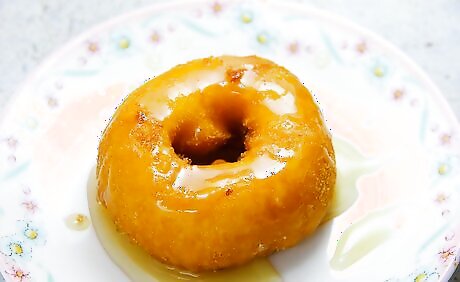
Drizzle it on breakfast items and desserts. Ginger syrup is a delicious and spicy substitute for maple syrup or honey. You can drizzle ginger syrup on pancakes, waffles, ice cream, fruit, and other breakfast and dessert favorites.
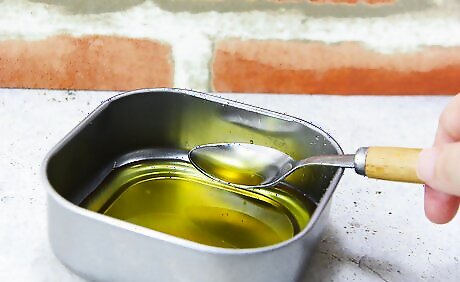
Create a DIY cough syrup. A homemade cough syrup won’t get rid of your cold, but it will help to soothe your throat. Next time you're whipping up a batch, use ginger sugar in place of the sugar, or add a drizzle of syrup to the batch for some extra spice.
Using Crystallized Ginger
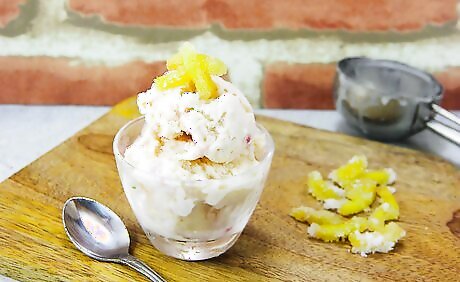
Sprinkle it on ice cream. Candied ginger is spicy and sweet, so it pairs well with desserts like ice cream. Next time you're serving ice cream or sundaes for dessert, garnish the bowls with a few pieces of candied ginger. You can cut the ginger slices into small slivers before sprinkling them on the ice cream.
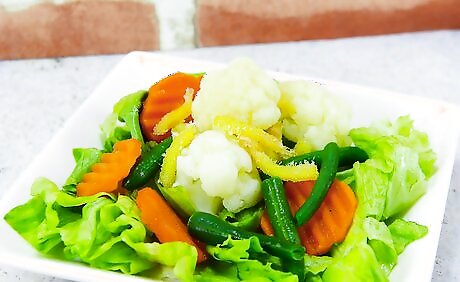
Add spice to savory dishes. Ginger is also a spice that pairs well with certain savory dishes, particularly ones made with root vegetables and squash. To use candied ginger as a garnish on these dishes, slice or chop it into small pieces first. Great savory dishes you can use candied ginger on include: Candied yams Squash or pumpkin soup Mashed or roasted squash Roasted carrots
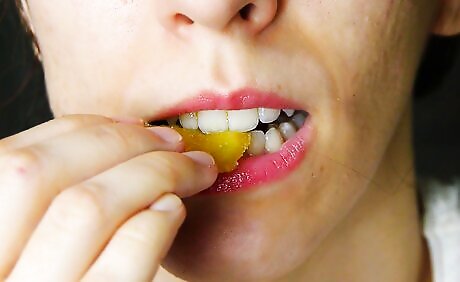
Chew on it to treat an upset stomach. Many people like to use ginger for upset stomachs, including nausea, vomiting, aches, and motion sickness. Chewing on candied ginger can be a tasty treat and a comfort food when your stomach is upset. Other common ways people enjoy ginger for an upset stomach include drinking ginger ale or ginger tea.
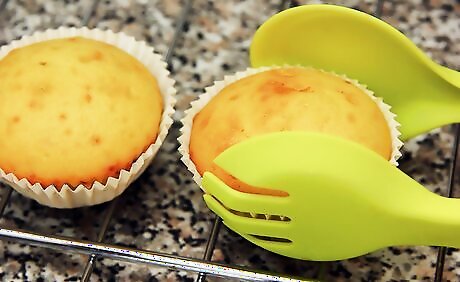
Whip up some lemon and candied ginger muffins. Ginger pairs well with citrus fruits, and there's no better way to get your morning started than with a lemon and candied ginger muffin.
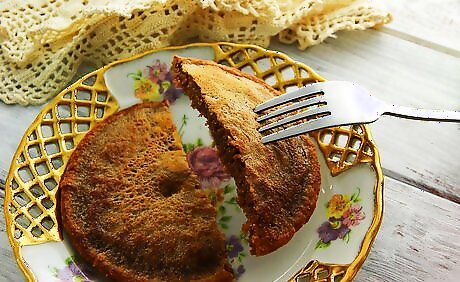
Use it in place of regular ginger in baked goods. You can substitute candied ginger for fresh ginger in any recipe that calls for fresh ginger. This includes tasty treats like gingerbread cake and gingered pumpkin cupcakes.


















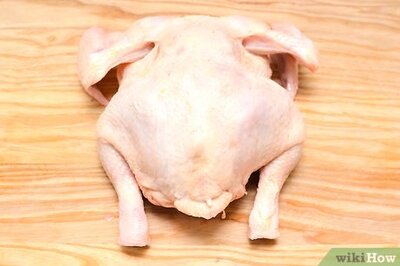

Comments
0 comment